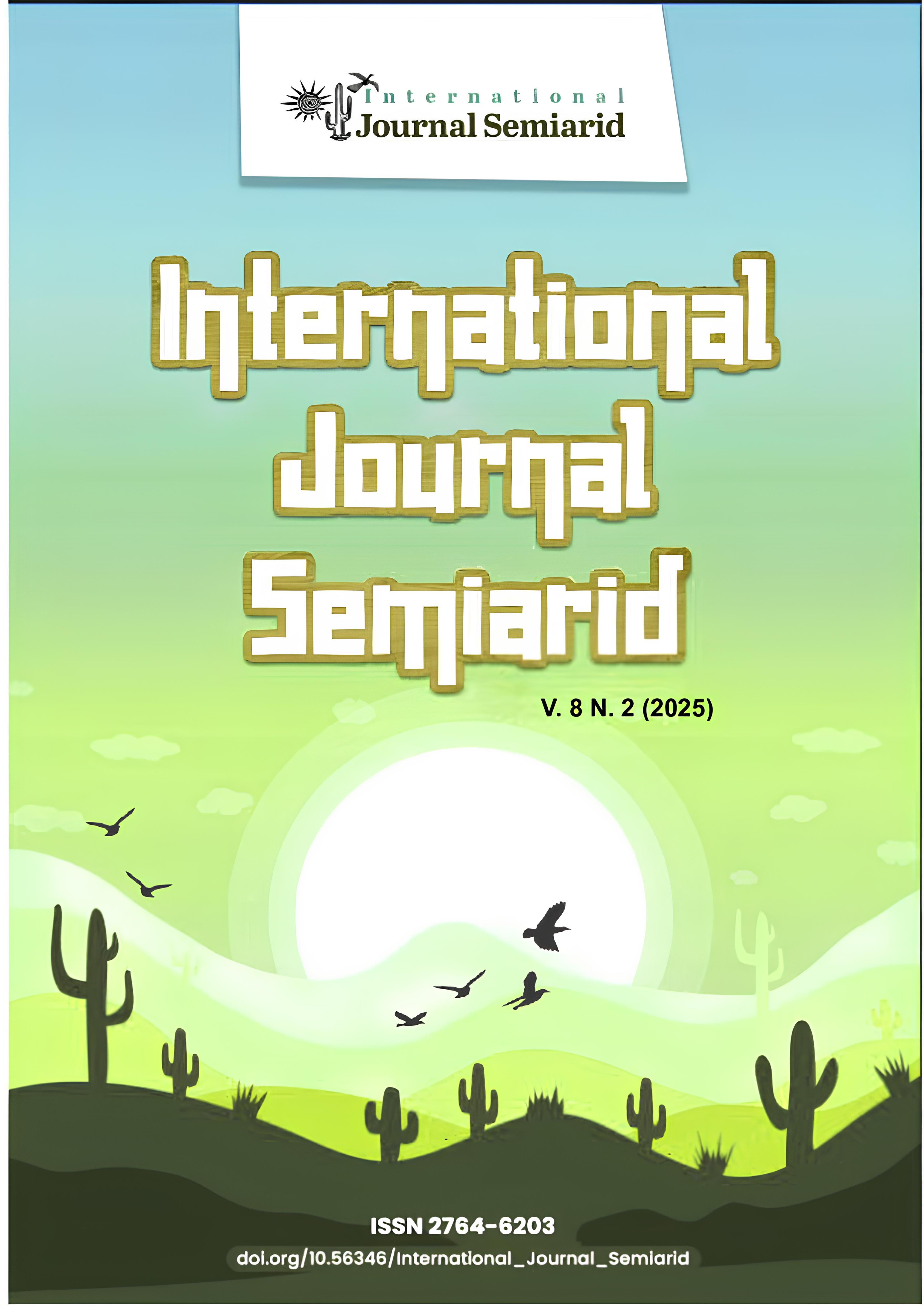USE AND OCCUPATION OF THE NHARTANDA VALLEY RESPIRATOR AND WETLANDS ON THE ZAMBEZI RIVER IN THE MUNICIPALITY OF TETE: COMMUNITY PERCEPTION, AND SOCIO-ENVIRONMENTAL RISKS
DOI:
https://doi.org/10.56346/ijsa.v8i2.317Keywords:
Riscos socioambientais, Uso e Ocupação, ZPP, SIG e Vale de NhartandaAbstract
The present article aims to delve into the use and occupation of the Nhartanda Valley breathing space and the wetlands along the Zambezi River in the Municipality of Tete, seeking to understand the community's perception of the socio-environmental risks associated with the use and occupation of this area. This area is considered a partial protection zone as it serves as a breathing space for the Zambezi River, where waters tend to flow during peak levels. It also constitutes the aquifer used to supply water to the population within the Municipality of Tete, with ongoing projects to expand water supply using this aquifer to the city of Moatize. Currently, the population of neighborhoods surrounding the Nhartanda Valley is extending their occupations for various purposes, including the continued practice of open defecation in the area. Despite this scenario, the municipality granted one of the region's major wetlands to a businessman for construction purposes in the Nhartanda Valley area, near the STEIA intersection. This decision could have serious environmental implications, in addition to increasing socio-environmental risks for the local population. From a methodological perspective, the study employed a mixed-methods approach, exploratory in nature with an explanatory focus. Geographic Information Systems (GIS) cartographic methods were primarily applied. Data collection involved semi-structured interviews, direct and indirect observation (based on satellite imagery for environmental analyses), and document analysis. The results concluded that the Nhartanda Valley is exposed to various flood risks, which could result in the loss of human lives and material damage. This vulnerability is exacerbated by a lack of awareness from both the municipality and the population. The municipality has allowed occupations in the area, often driven by political interests aimed at gaining electoral support, and has approved projects reflecting private or familial interests. On the other hand, the population, ignoring socio-environmental risks, has occupied the area for housing construction, the production of fired bricks, and open defecation practices, thereby endangering the aquifer, which is essential for water supply.
References
ALMEIDA, F., & ROCHA, P. (2021). Gestão de Áreas Urbanas Próximas a Wetlands.
BANDE, F. M. (2018). Análise do relevo e dinâmica hidrológica no Vale de Nhartanda. Maputo: Universidade Eduardo Mondlane.
COBA, A. M. (2012). Caracterização hidrogeológica do Vale de Nhartanda e sua relação com o Rio Zambeze. Maputo: Universidade Eduardo Mondlane.
COSTA, M., & RODRIGUES, F. (2021). Reassentamento de populações em áreas de risco: Experiências e lições aprendidas. Editora Planeta Verde.
COSTA, R., & SILVA, L. (2020). Gestão integrada de wetlands no contexto das mudanças climáticas. Revista Brasileira de Ecologia, 12(3), 45-67.
FAO (2006). Práticas Conservacionistas de Solos em Áreas de Risco.
FAO (2015). Manejo Sustentável do Solo.
KASSER, C., & SCHERER, L. (2020). A gestão sustentável dos recursos naturais: Desafios e soluções para o equilíbrio entre desenvolvimento económico e preservação ambiental.
LOPES, A., SILVA, M., & MATOS, J. (2021). Impactos da Urbanização em Áreas Húmidas de Moçambique: Estudos de Caso no Vale de Nhartanda. Revista de Estudos Ambientais de Moçambique, 18(2), 45-59.
MENDES, J., GONÇALVES, A., & MATOS, P. (2021). Impacto da ocupação antrópica em zonas húmidas no sul da África. African Journal of Environmental Studies, 9(1), 23-34.
MINISTÉRIO DA TERRA E AMBIENTE (MOÇAMBIQUE). (2019). Plano Nacional de Gestão de Recursos Naturais. Maputo: Governo de Moçambique.
PEUT. (2012). Plano Estratégico Urbano de Tete. Tete: Conselho Municipal de Tete.
RAMSAR CONVENTION. (2020). Wetlands and Water Management: African Case Studies. Gland, Suíça.
RIBEIRO, J., SILVA, P., & ALMEIDA, R. (2020). Gestão de áreas de planície de inundação: Desafios e soluções sustentáveis. Revista de Planejamento Ambiental, 12(3), 45-60.
SACHS, J. D. (2015). The Age of Sustainable Development. Columbia University Press.
SANTOS, A. (2019). Conscientização comunitária como ferramenta para o desenvolvimento urbano sustentável. Revista Brasileira de Desenvolvimento Urbano, 9(2), 78-92.
SANTOS, J., et al. (2020). Wetlands: Função Hidrológica e Vulnerabilidades.
SILVA, L., & ALMEIDA, M. (2018). Urbanização em áreas de risco: Impactos sociais e ambientais. Editora Cidade Sustentável.
SILVA, L. R., OLIVEIRA, J. A., & MATOS, F. M. (2021). Impactos ambientais da mineração de carvão em Moçambique: O caso do Rio Zambeze. Revista de Estudos Ambientais, 15(2), 45-58.
SILVA, M. (2013). Gestão Integrada de Águas Pluviais em Áreas Vulneráveis.
SILVA, R., GOMES, T., & CHAVES, D. (2021). A degradação ambiental no Rio Zambeze: Causas e consequências. Revista Africana de Sustentabilidade, 15(3), 89-104.
UNESCO. (2020). Wetlands and their Role in Climate Adaptation. Paris: UNESCO.


